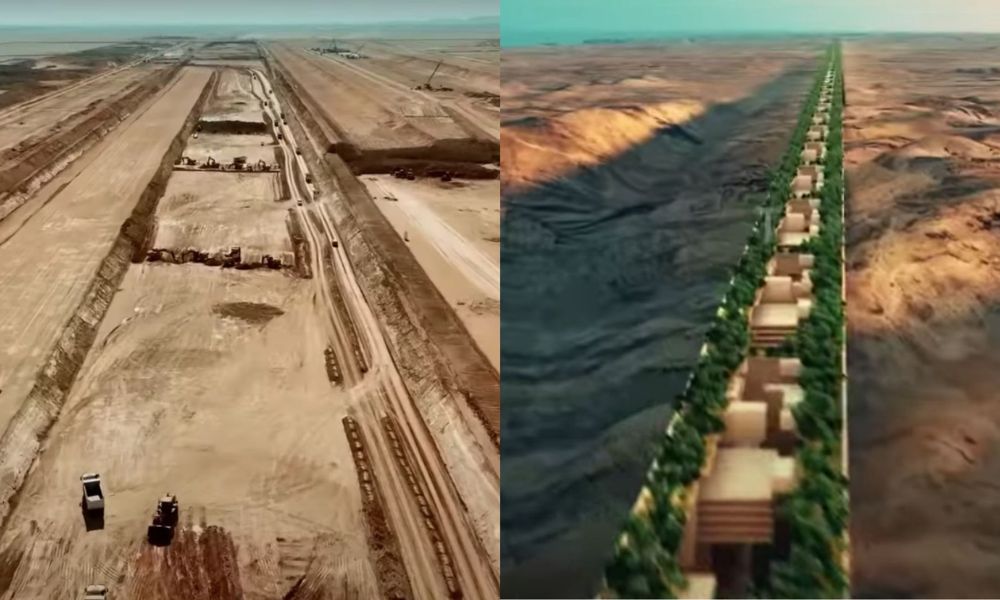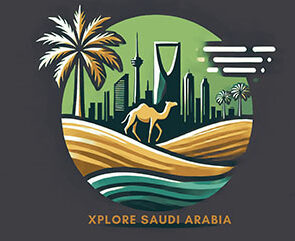
In the heart of Saudi Arabia’s $1.5 trillion NEOM project lies The Line—a bold reimagining of urban life that challenges the conventions of city planning, sustainability, and human-centric design. Stretching 170 kilometres across the Tabuk region, this linear city is poised to become a global benchmark for futuristic living, economic diversification, and environmental stewardship.
What Is The Line?
The Line is a proposed linear city within the NEOM megaproject, unveiled in 2021 by Crown Prince Mohammed bin Salman as a centrepiece of Saudi Arabia’s Vision 2030. Designed to house up to 9 million residents, it consists of two parallel, mirrored skyscrapers standing 500 meters tall and 200 meters apart, running across desert, mountain, and coastal terrain. The entire city will occupy just 34 square kilometres, preserving 95% of the surrounding natural environment.

Unlike traditional cities, The Line will have no cars, roads, or carbon emissions. Instead, it will rely on high-speed rail and AI-powered mobility systems, ensuring that all daily essentials—schools, healthcare, parks, and workplaces—are within a five-minute walk. A full journey from end to end will take just 20 minutes.
Why It Matters for Saudi Arabia
Rethinking Urban Design
The Line challenges traditional urban sprawl by proposing a 170-kilometer-long, 200-meter-wide city that stretches from the Red Sea coast into the desert. Standing at 500 meters tall, this vertical city aims to house up to 9 million residents within a compact footprint of just 34 square kilometres. This design not only conserves 95% of the surrounding natural environment but also ensures that all essential services are within a five-minute walk, promoting a pedestrian-friendly lifestyle.
Sustainability at Its Core
Central to The Line’s vision is its commitment to environmental sustainability. The city plans to operate entirely on renewable energy sources, including solar, wind, and green hydrogen. By eliminating cars and roads, The Line aims to achieve zero carbon emissions, setting a new standard for eco-friendly urban development.
Additionally, the integration of green spaces, vertical gardens, and open areas throughout the city is designed to enhance air quality and residents’ well-being. The project’s emphasis on preserving natural landscapes and promoting biodiversity underscores its role as a model for sustainable living.
Technological Integration
The Line is envisioned as a “cognitive city,” leveraging advanced technologies to optimize daily life. Artificial intelligence, the Internet of Things (IoT), and autonomous transportation systems will be seamlessly integrated to manage resources efficiently, reduce waste, and enhance the overall quality of life.
A high-speed rail system is planned to traverse the entire length of the city, allowing residents to travel from end to end in just 20 minutes. This efficient transportation network eliminates the need for personal vehicles, further contributing to the city’s sustainability goals.
Economic and Social Implications
Beyond its architectural and technological innovations, The Line is a strategic component of Saudi Arabia’s Vision 2030 plan, aimed at diversifying the nation’s economy and reducing its reliance on oil. By fostering a hub of innovation, The Line is expected to attract global talent, leading companies, and significant investment, thereby creating new industries and employment opportunities.
Socially, The Line aspires to redefine community living by promoting equitable access to amenities and services. Its design encourages spontaneous interactions and a sense of community, challenging the isolation often found in sprawling urban environments.
Global Influence and Future Outlook
The Line’s ground-breaking approach to urban planning has the potential to influence city development worldwide. Its emphasis on sustainability, technological integration, and human-centric design offers a blueprint for future cities grappling with challenges like climate change, overpopulation, and resource scarcity.
While the project’s scale and ambition have garnered both admiration and scepticism, its progress will be closely watched by urban planners, environmentalists, and policymakers globally. If successful, The Line could herald a new era of urban living, demonstrating how innovative design and technology can harmoniously coexist with nature.
Conclusion
The Line represents a bold experiment in redefining urban life. On successful completion, it could set new standards for sustainability, efficiency, and human-centric design, influencing cities around the globe. However, its realization will depend on addressing significant logistical, social, and ethical challenges. As construction progresses, the world will be watching to see whether The Line can truly deliver on its promise of a better, more sustainable future.






I hadn’t realized how massive Jubail is in the global context—its specialization in petrochemicals and steel really underscores the Kingdom’s industrial capabilities. Curious to see how Riyadh’s broader focus complements this specialization.
The $63 billion investment in Diriyah reflects a bold vision for Saudi Arabia’s future. With over 38 hotels planned and thousands of residential units, Diriyah is positioning itself as a world-class destination for both tourists and investors alike. I’m curious about the potential impact on local businesses and the broader economy.
This strategic partnership seems like a win-win for both countries. I’m curious how cultural and regulatory differences might affect the integration of Brazilian talent into Saudi sectors like tech and healthcare.
The scale of Qiddiya is impressive, but what really stands out is its potential to create long-term jobs and shift global perceptions of Saudi Arabia. Projects like this could play a pivotal role in reshaping the region’s tourism and entertainment landscape.
It will take little time to create more job I think. Yes, it true, Qiddiya plays a pivotal role in reshaping the region’s tourism and entertainment landscape.
I like the helpful info you supply in your articles.
I will bookmark your weblog and check again here regularly.
I’m moderately sure I will be told many new stuff right
here! Good luck for the next!
Thanks